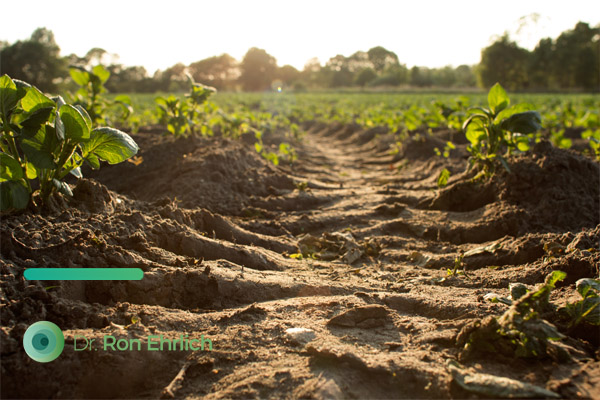
Why healthy soil means healthy plants and food
There are many reasons why I am passionate about regenerative agriculture. One of the most important is the emphasis on soil health, essential for the health of the planet and the health of the population. Soils around the world have lost so much diversity and health, Australia’s included.
Healthy soils = healthy plants
You are what you eat, but that also means you are what your food eats. Healthy soil is a living ecosystem consisting of microscopic and larger organisms. It supplies nutrients and water to plants, allowing them to grow and flourish and be nutritionally dense.
Listen: Dr. Ron Ehrlich interviews Glenn Morris. Post continues after audio.
The role of nutrients
We often hear about three main nutrients in soil – nitrogen, phosphorus and potassium.
- Nitrogen: key nutrient for plant growth in plant cells, proteins and in chlorophyll
- Phosphorus: helps transfer energy from sunlight to plants, stimulates early root and plant growth
- Potassium: increase vigour and disease resistance of plants, helps form starches, sugars and oils in plants
However, these aren’t the only important nutrients.
- Calcium: essential for root health, growth of new roots and root hairs. It is also important for the development of leaves.
- Magnesium: a key component of chlorophyll, which is vital for photosynthesis (converting the suns energy to food for the plant).
- Sulphur: an amino acid in plant proteins that are involved in energy-producing processes in plants.
- Iron: regulates and promotes growth
- Manganese: helps with photosynthesis
- Copper: essential for enzymes in plants
- Zinc: helps plants produce a hormone responsible for stem elongation and leaf explanation
- Boron: important for the formation of cell walls in rapidly growing tissues
- Molybdenum: helps bacteria and soil organisms convert nitrogen in the air to soluble nitrogen compounds in the land
In addition to needing to contain these nutrients, healthy soil also needs to be able to store them. A soils ability to hold onto nutrients is measured by its cation exchange capacity or CEC. Soil with an abundance of clay or organic matter will have a high CEC, while soil that is very sandy or with little organic matter will have a low CEC.
Listen: Dr. Ron Ehrlich interviews Prof. Fred Provenza. Post continues after audio.
The role of organisms
For this reason, having a diverse ecosystem in the soil is key. Organic matter from the compost will increase the ability of soil to retain nutrients. The use of animals in regenerative farming also works this way, with manure and managed to graze supporting the ecosystem of the soil. It’s all about diversity.
Learn more
Soil health and regenerative agriculture is something I’m very passionate about. From a nutrition and climate point of view, it is key to our future. I’ve done several podcasts on this matter with people who are experts in their field, hear more at Unstress here. You can also listen to my episode with Glenn Morris on the importance of building resilience in soil or with Tim Wright on using animals to regenerate the land.
